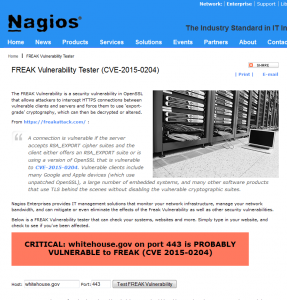You may have noticed that the naming convention for several products has undergone a change.
Nagios Network Analyzer was the first product to make the transition to our new convention – moving from version 2014R1.9 to version 2R1.0. Nagios XI followed, moving from version 2014R2.7 to version 5R1.0. This change largely represents clarity and uniformity across our product line – the ultimate goal is reducing confusion.
We recently made a final revision to the naming convention to match standard Semantic Versioning. What this means is that moving forward, all products will use the following convention:
MAJOR.MINOR.PATCH
Some of our products have already made the move, the rest will follow the new versioning convention in their respective releases.
Nagios XI
From: 5R1.0
To: 5.2.0
Nagios Log Server
From: 1R2.2
To: 1.2.3
The naming change also provides key benefits internally, including:
- Increased development workflow clarity, especially regarding revision software.
- The ability to better coordinate our releases by changing the appropriate version number.
In addition to the above benefits, we think that the new naming convention has a nice ring to it. We hope that the change isn’t too confusing – let us know if you have any questions!














